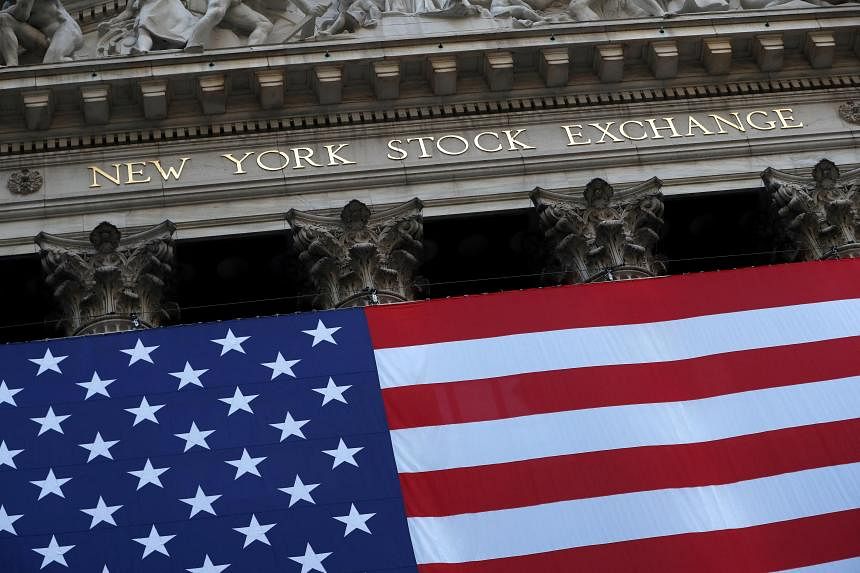SINGAPORE - Getting from 9 per cent to 3 per cent is easier than getting from 3 per cent to 2 per cent. And this reality is rattling markets as sticky inflation numbers keep investors guessing the central banks’ next move on interest rates.
It was a rocky week for markets, with major global indexes hitting upside resistance levels amid signs that the downtrend in inflation may be slowing. There was also some hesitancy on taking positions before the gathering of the US Federal Open Markets Committee on March 19 and 20, when pronouncements by chairman Jerome Powell and his Fed colleagues will be closely watched.
On Wall Street, the Dow Jones Industrial Average was flattish at 38,714.77 points, while the S&P 500 slid 0.13 per cent to 5,117.09 points. The tech-heavy Nasdaq gave up 0.7 per cent for the week to 15,973.17 points.
In Singapore, the Straits Times Index bounced between 3,130 and 3,190 points, before closing at 3,172.96 for a 0.8 per cent gain, boosted largely by a 2 per cent gain by the trio of banks.
Also supporting the index was Singtel, which rose to a month-high at $2.48. In a report dated March 13, DBS Group maintained a 12-month price target of $3.27 on the stock, citing its dominant positions in Singapore and Australia, and significant stakes in telecom players in India, Indonesia, the Philippines and Thailand, which contributed over 67 per cent of the group’s operating profit in financial year (FY) 2023.
The broader Singapore market remained largely moribund, lacking in liquidity or commitment.
Meanwhile, the latest US inflation number for February, coming in at a hotter than expected 3.2 per cent annual rate, has given sceptics of central-bank rate cuts more munition. Adding to this were sticky consumer prices and producer price data, with March 14’s Producer Price Index coming in higher than expected.
Market volatility was further pumped up on March 15 by the quarterly Triple Witching, which saw US$5 trillion (S$6.7 trillion) in options tied largely to semiconductor stocks, exchange-traded funds (ETFs) and stock indexes expiring. Total option volume exceeded stock trades for the first time since 2021.
But Goldman Sachs noted that traders remained in favour of call options over put options in semiconductor and other popular option plays, which indicates that the market bullishness remains intact. Call options are upbeat bets on stocks, ETFs and indexes, while put options represent bets that the underlying asset will fall.
These Triple Witchings happen four times a year – on the third Fridays of March, June, September and December – when the futures tied to the three asset classes expire. Market experts like Mr Vasu Menon, managing director for investment strategy at OCBC, played down concerns over their impact on underlying equities.
“This is not indicative of the medium- to longer-term market trend, which remains constructive based on decent economic and earnings data, and supported by Fed rate-cutting prospects,” he said. “Historically, such option expirations do cause market volatility, but don’t have a lasting impact or alter the medium-term investment outlook.”
The bigger concern for markets is inflation and how this will impact policy at central banks, say analysts.
“Central banks are still constantly attuned to the inflation analogue, so the Federal Reserve is still cautious to prevent the rekindling of price pressures,” wrote Mr Stephen Innes, managing partner at SPI Asset Management. “However, interest rates remain relatively elevated for numerous businesses and consumers.”
But with global equity markets hovering around new all-time highs – driven by artificial intelligence (AI) hype and hopes of rate cuts – some investors are questioning what could go wrong in 2024.
Financial house Lombard Odier sees geopolitics, threats to tech-sector returns, more persistent inflation, credit events and public debt sustainability as some of the major risks for investors in 2024.
That said, it judges known market risks to be either low or medium, adding that it supports the current risk-on backdrop and is sticking with its decision to keep portfolio risk exposures at strategic levels.
“The risk of an inflationary rebound in the US is low but rising. Tech stocks’ outperformance should moderate in time. Strong investor demand for yield and easing financial conditions should help keep credit risks contained. Commercial real estate exposures look manageable systemically for banks and insurers, but are harder to assess at asset managers,” it wrote in an analysis.
Going forward, the Fed now faces the hardest part of its job – ensuring a soft landing for the US economy which will bring inflation down towards its 2 per cent target, while at the same time ensuring its interest rate policy does not hurt corporates and households.
But it faces real challenges.
As Oxford Economics pointed out recently, the composition of the consumer basket has changed significantly after Covid-19 hit, and it is only slowly reverting to the pre-crisis trend in which the significance of goods in overall consumption fell. This, taken together with higher pass-throughs, supply-chain issues and policy changes, means inflation will become more sensitive to both commodity prices and supply-chain shocks.
The prevailing view is that the Fed will start shaving down rates during its June meeting, with a total of 75 basis points in total cuts in 2024. If that happens, the markets will have more legs.
This week, however, investors will be watching to see if the Fed will speak about how it plans to slow the pace of quantitative tightening (QT). The Fed has been reducing its balance sheet since June 2022, and the size of the Fed’s balance sheet has fallen from a peak of nearly US$9 trillion to about US$7.5 trillion now.
If the Fed slows the pace of QT, which will suck less liquidity from the US financial system, it should augur well for Wall Street and even other global investment markets.
In the United Kingdom, the Bank of England could start rate cuts by the second half. But no announcement is likely on March 21 when policymakers meet. Meanwhile, UK investors will keep an eye on home prices (March 18), consumer inflation (March 20) and retail sales (March 22).
In Japan, investors are waiting to see if the Bank of Japan will end its negative rate policy on March 19 instead of waiting until April. Significant progress has been made on inflation in Japan, which came in at an above-target 2.2 per cent in January. The central bank has long pursued a goal of achieving sustainable 2 per cent inflation, and a key component of that goal is setting in motion a “virtuous cycle” in which wage growth feeds into demand-led price gains. Interestingly, the annual spring wage negotiations to date showed several large companies agreeing to fully meet demands from unions with the largest average pay hikes since 2013.
Beyond all these uncertainties, the big event markets will be watching will be the November presidential election in the US. A likely Biden-Trump rematch in the US presidential election is already unsettling investors.
By all accounts, this will be an eventful year for markets.


